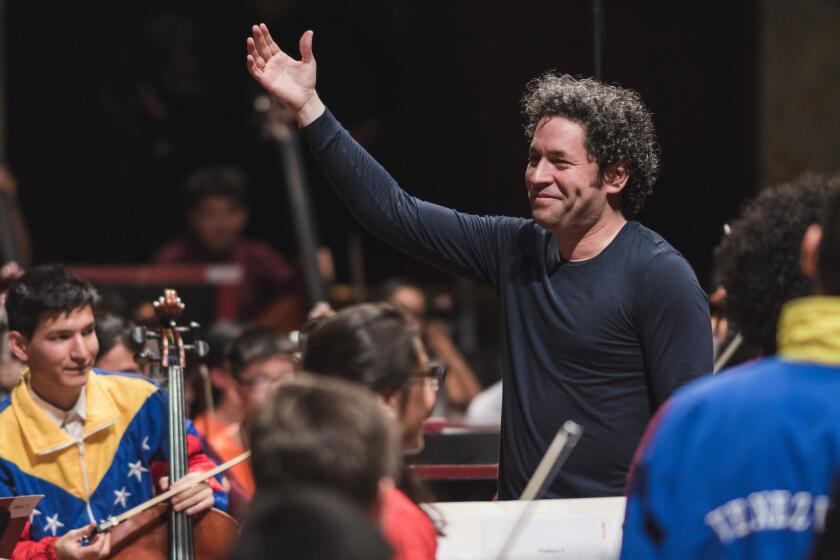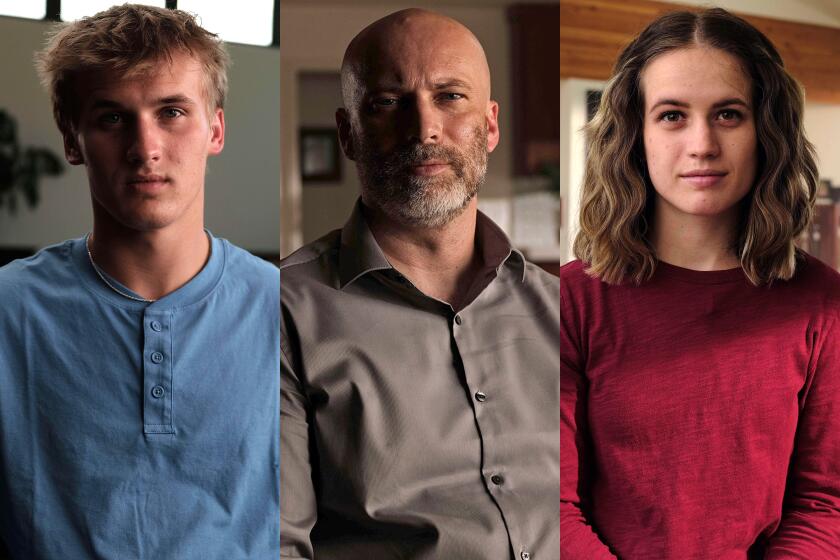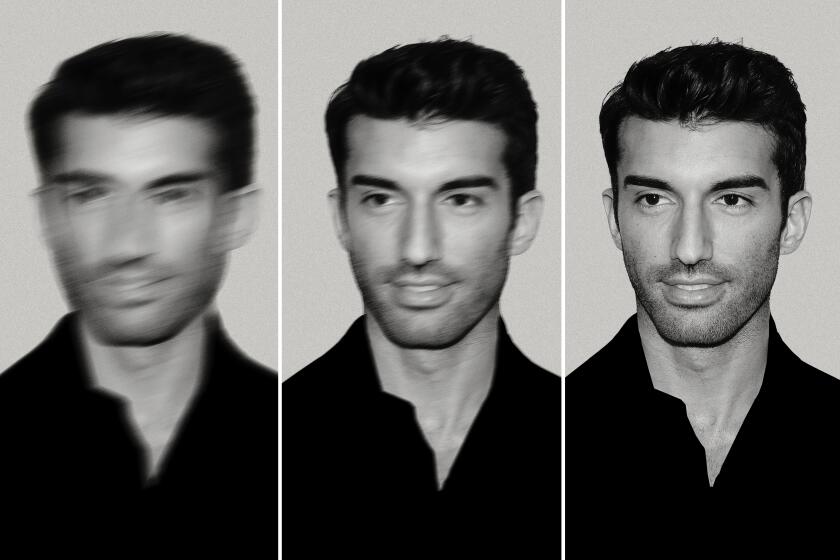Full Coverage: The Music Center at 50
- Share via
The Dorothy Chandler Pavilion opened to great fanfare 50 years ago, marking a new era in the cultural life of Los Angeles. At a lavish ceremony attended by 3,500, Mrs. Chandler called its creation "the most wonderful experience of my life." Half a century later, the Los Angeles Times takes an in-depth look at the Music Center's place today in a city that has changed greatly.
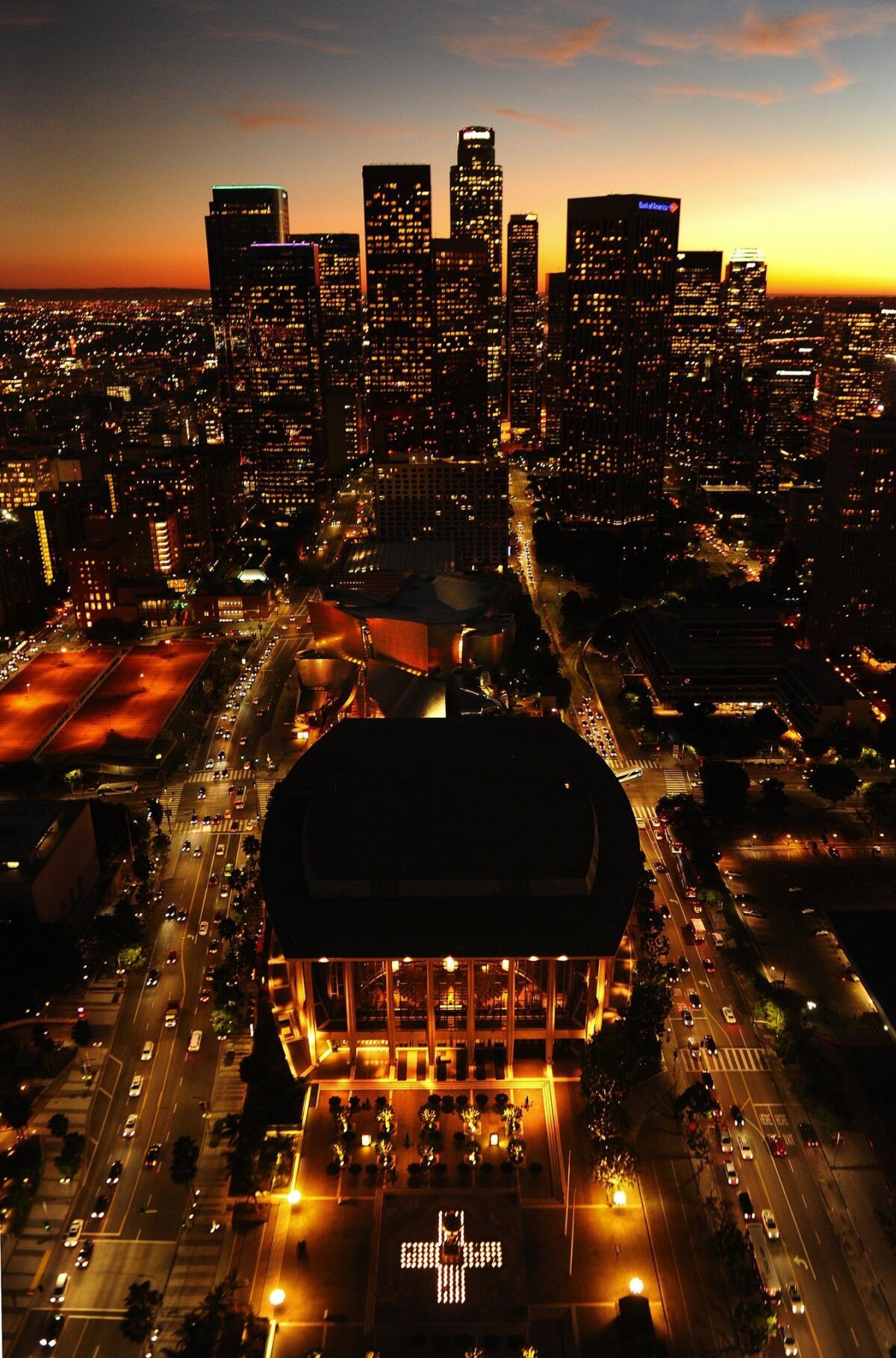
An aerial view of Dorothy Chandler Pavilion in downtown Los Angeles. (Wally Skalij / Los Angeles Times)
The Music Center: past, present and future
Fifty years ago, the Music Center made the world recognize Los Angeles as a cultural hub. But in recent years, has its glow begun to fade? Are its spaces no longer adequate for the organizations it once nurtured? Los Angeles Times music critic Mark Swed looks back to see how the Music Center shaped Southern California's cultural identity, and looks ahead to see what the center needs to become a visionary force again.
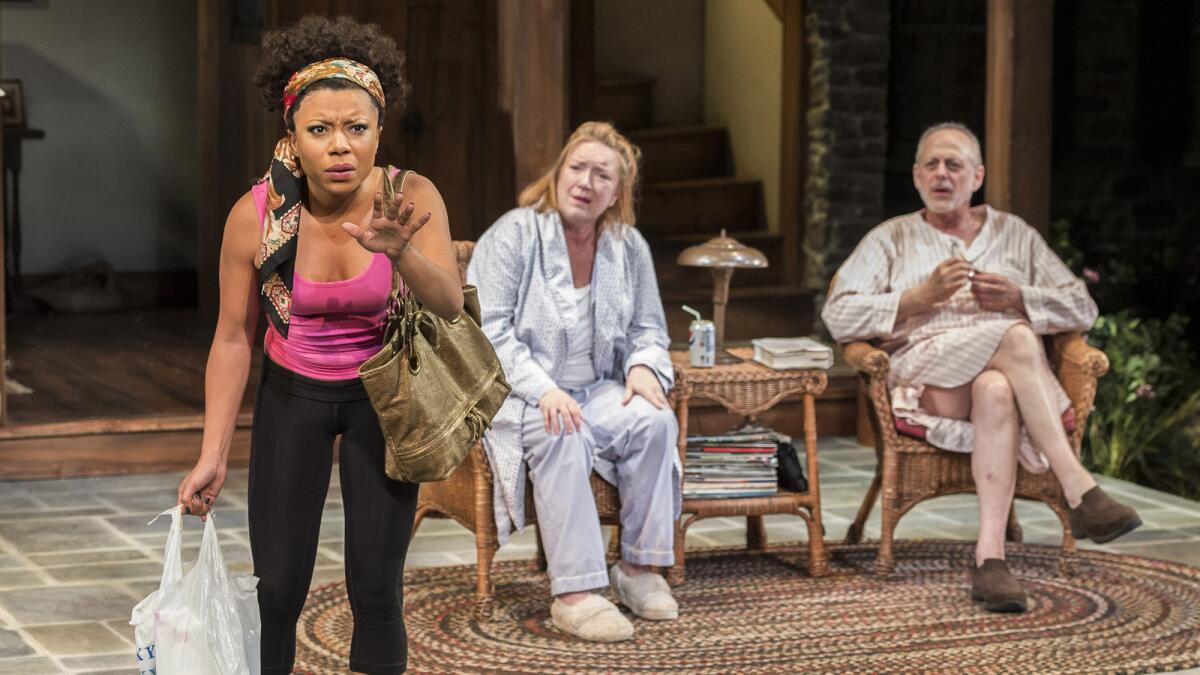
The February staging of "Vanya and Sonia and Masha and Spike" at the Taper Forum was a hit with L.A. Times critic Charles McNulty. (Craig Schwartz)
Going off-center
For Los Angeles Times theater critic Charles McNulty, Michael Ritchie's 2005 takeover as artistic director of the Center Theatre Group was the beginning of a roller coaster ride. McNulty reflects on the ups and downs, and offers a plan to revitalize the Mark Taper Forum.
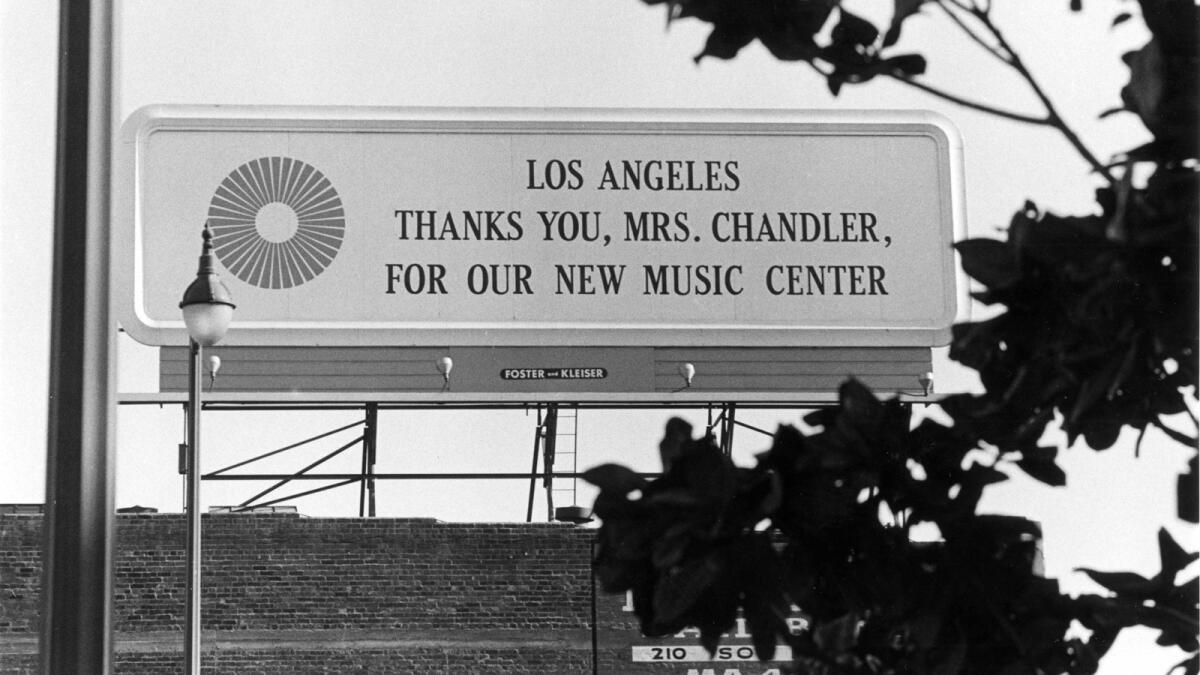
A Los Angeles billboard thanks Dorothy Chandler. (The Music Center Archives)
She did it her way
Dorothy Chandler’s campaign for the Music Center was a one-woman crusade for more, more, more. Chandler got wealthy donors to boost contributions, sometimes by tearing up checks in front of their faces. “She left two legacies, for women and for culture,” said former Los Angeles Philharmonic music director Zubin Mehta.

A view of the Music Center complex and it's neighboring structures on Nov. 3, 2014. (Lawrence K. Ho / Los Angeles Times)
'We've been using the place all wrong'
When Los Angeles' Music Center was designed five decades ago, the orientation was meant to be toward Hope Street. But the topography of Bunker Hill and the changes along Grand Avenue instead make it seem backward. Los Angeles Times architecture critic Christopher Hawthorne explains.
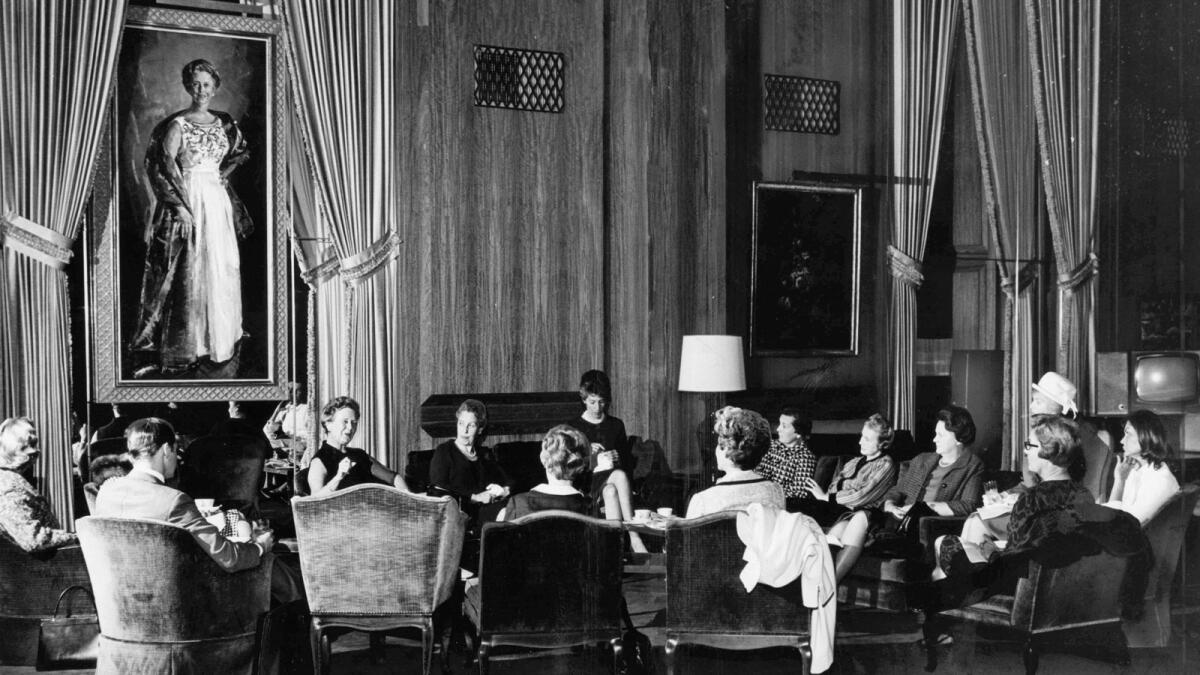
Dorothy Chandler under her portrait on the wall at a meeting in the Founders Room of the Dorothy Chandler Pavilion on March 28, 1967. (Los Angeles Times)
A scene more ‘Downton Abbey’ than downtown L.A.
When the curtain closes for intermission at the Dorothy Chandler Pavilion, high-level donors lounge and nosh in the exclusivity of the Founders Room. Be a fly on the wall inside the lavish oasis, where Chandler herself once entertained Queen Elizabeth II and held court with her power elite.
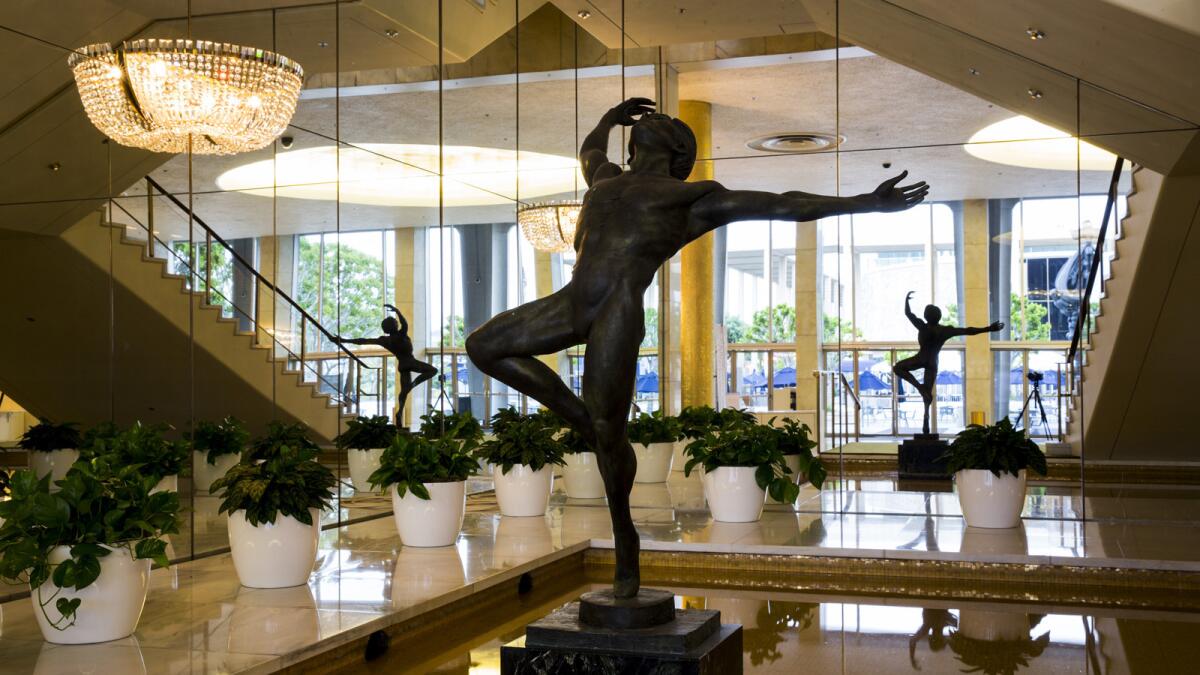
The classical European opulence of the Dorothy Chandler Pavilion remains, but the Music Center is trying to broaden its appeal to all of Los Angeles. (Jay L. Clendenin / Los Angeles Times)
Becoming a mirror of Los Angeles
The Music Center is broadening its mission to reach a younger, more diverse crowd. Leaders have a hip-hop festival in the works, as well as an evening of dances that will take place in unorthodox spots around the Music Center. But ultimately, success hinges on major donors' willingness to fund such activities.

Replicas of Oscar statues are illuminated in the night outside the Dorothy Chandler Pavilion in March 1999, ahead of the 71st Academy Awards. (Timothy A. Clary / AFP / Getty Images)
Once the Oscars' home
The Academy Awards were held at the Music Center for nearly three decades. The Midcentury architecture of the Dorothy Chandler Pavilion served as an elegant backdrop for Hollywood's A-list, but its logistical issues trumped the alluring aesthetic, and leaders at the academy and the Music Center parted ways. But, oh, the memories that remain.
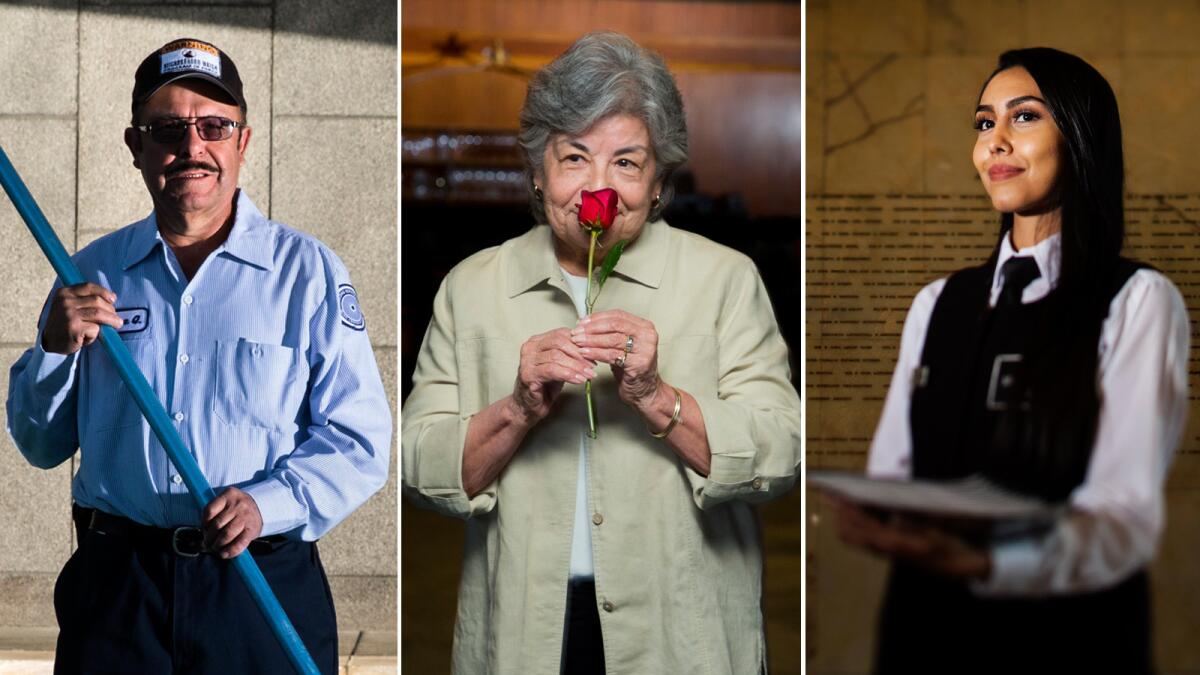
From left: Jose Quintero, Rosa Bautista and Evangeline Santos all work at the Music Center. (Jay L. Clendenin / Los Angeles Times)
Those who make it all work
Los Angeles Times photographer Jay L. Clendenin captures the uncredited cast of characters behind all of the Music Center's shows.
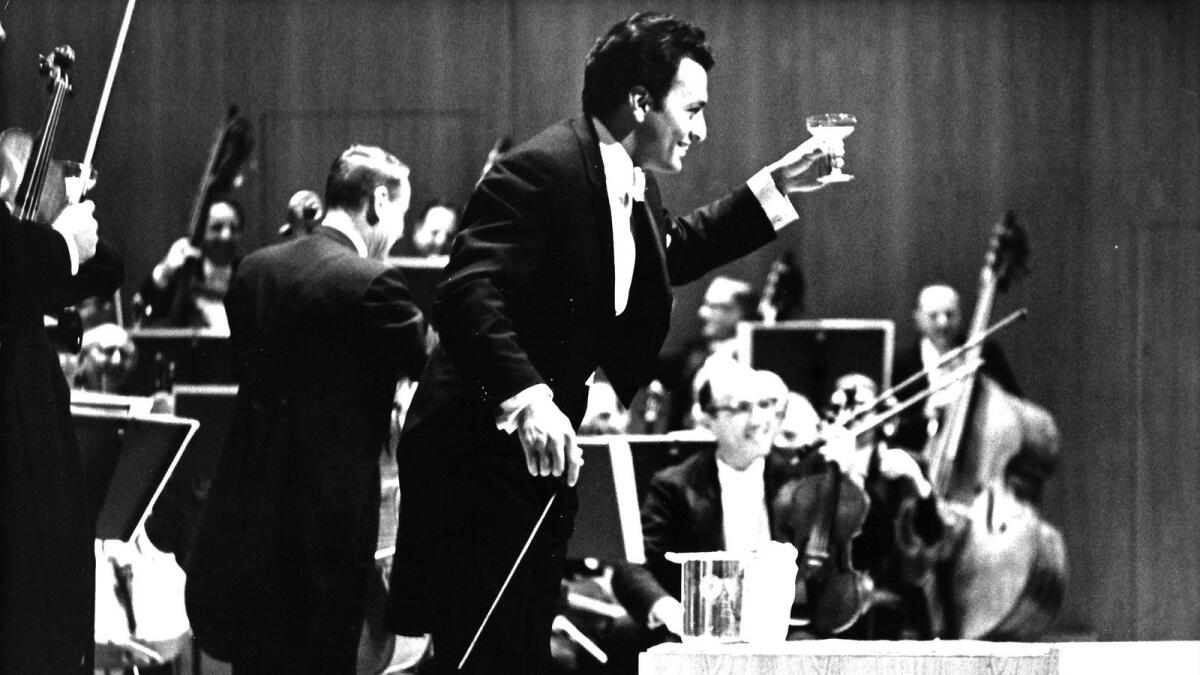
Zubin Mehta enjoys a glass of Champagne on stage at the Dorothy Chandler Pavilion at the Music Center on opening night, Dec. 6, 1964. (Otto Rothschild Collection / The Music Center Archives)
Fifty years, and counting
Artistic triumphs and high drama define the history of the Music Center as it turns 50 years old. L.A.’s grande dame of arts and culture has hosted so many memorable performances — and seen its fair share of controversy. Here’s a sampling of all that color and drama, on stage and behind the scenes.
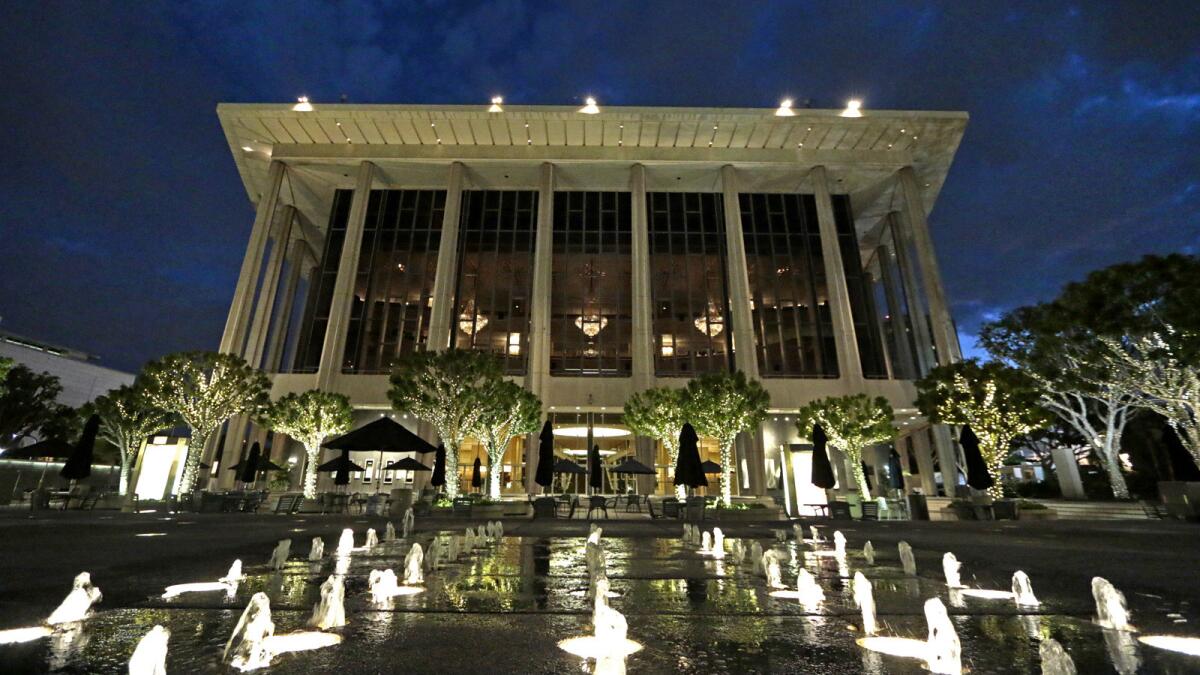
The exterior of the Dorothy Chandler Pavilion at night. (Lawrence K. Ho / Los Angeles Times)
Grande dame's pricey makeover
Consultants have pinned down major upgrades that the Dorothy Chandler Pavilion needs to improve efficiency and cost-effectiveness. Also under consideration is a $25-million face lift for the large plaza between the Pavilion and the Mark Taper Forum.
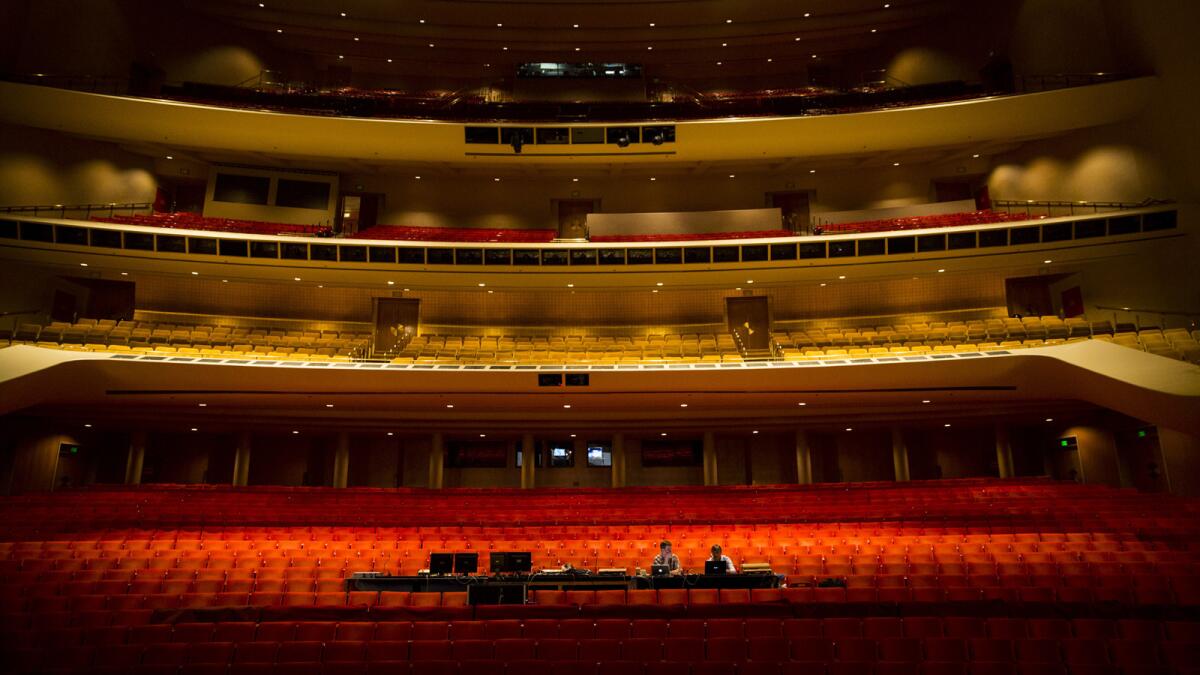
Inside an empty Dorothy Chandler Pavilion, photographed Oct. 30, 2014. (Jay L. Clendenin / Los Angeles Times)
Down to basics
Do you know where the Music Center begins and ends? (Hint: Part of it is in Culver City.) Mark Taper, Howard F. Ahmanson. Their names are on theaters — Do you know who they were?
The opening of the Dorothy Chandler Pavilion
Vintage footage of the Dorothy Chandler Pavilion being built, narrated by Los Angeles Times architecture critic Christopher Hawthorne.

(Doug Stevens)
Celebrating a landmark
At first, the Music Center consisted only of the Dorothy Chandler Pavilion, designed by Welton Becket as a home for the Los Angeles Philharmonic and opened in December 1964. Three years later, two theaters joined the block, the Mark Taper Forum and the Ahmanson Theatre. Here's a break down of the Music Center's main components.
The biggest entertainment stories
Get our big stories about Hollywood, film, television, music, arts, culture and more right in your inbox as soon as they publish.
You may occasionally receive promotional content from the Los Angeles Times.

